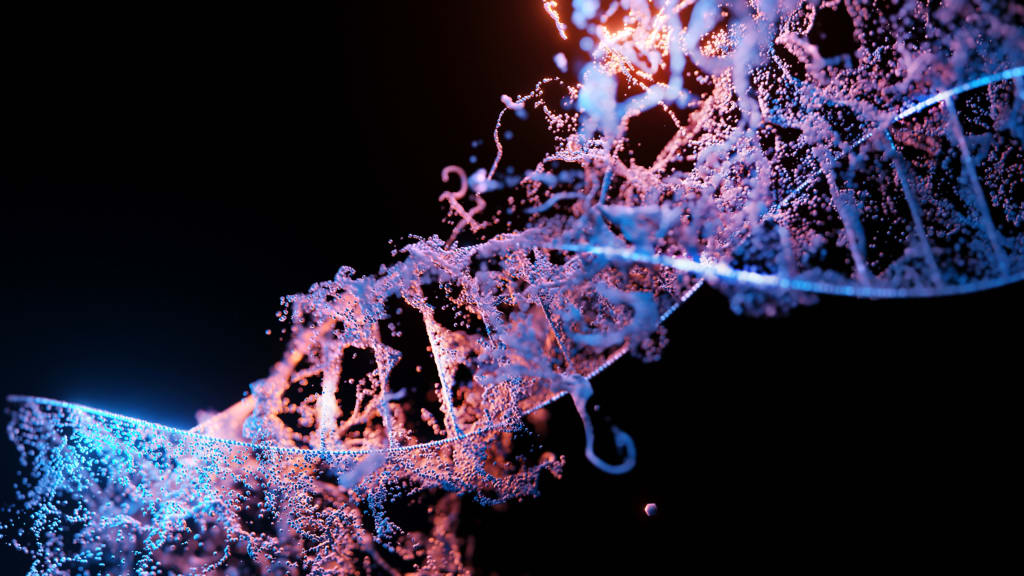The Story of DNA: From Humble Beginnings to Revolutionary Discoveries
Unlocking Life's Wonders: The Fascinating Tale of DNA from its Pioneering Discovery to the Latest Breakthrough

In 1953, James Watson and Francis Crick made a groundbreaking discovery that revolutionized the field of biology and paved the way for modern genetics and medicine. They unraveled the double helix structure of DNA, and their discovery set the stage for years of research and collaboration that continue to this day.
Over time, the discovery of DNA's structure has had significant practical implications, from developing new methods for studying DNA to creating tools for diagnosing and treating genetic diseases. Today, advancements in genetics and genomics are leading to new breakthroughs in personalized medicine, cancer treatment, and other areas of healthcare.
However, Watson and Crick's discovery was not without controversy. Many scientists contributed to the research that led to the discovery, but their contributions were not always recognized or acknowledged. Rosalind Franklin's work on X-ray crystallography played a key role in understanding DNA's structure, but she was not included in the Nobel Prize awarded to Watson, Crick, and Maurice Wilkins in 1962.
Despite the controversies, the discovery of DNA's structure remains one of the greatest achievements in the history of science. It has paved the way for countless discoveries and innovations in the field of genetics and continues to inspire new generations of scientists and researchers to explore the mysteries of life.
As the study of DNA continues to evolve, scientists are finding new ways to harness its power to treat disease and improve lives. Genetic testing and modification raise ethical concerns, but they also offer the potential for personalized medicine and the eradication of genetic disorders.
From the Human Genome Project to CRISPR gene editing, scientists are discovering new ways to use DNA to improve health and well-being. And as we celebrate the legacy of Watson and Crick's discovery, we must recognize the ongoing contributions of scientists worldwide who are building on their work and pushing the boundaries of what we thought was possible.
The discovery of DNA's structure was not the end of the story but rather the beginning of a new era in science. The Human Genome Project, a global effort to sequence and map all the genes in the human genome, was launched in 1990 and completed in 2003. This monumental achievement has opened up new frontiers in personalized medicine and disease prevention.
Today, genetic testing and gene editing are making headlines, with the potential to revolutionize medicine and agriculture. From identifying the genetic markers for diseases to editing the genes of plants to improve their resistance to pests and diseases, the possibilities for DNA technology are endless.
But with this great power comes great responsibility. The ethical implications of genetic testing and gene editing are vast and complex. Questions about privacy, ownership of genetic data, and the potential for discrimination and stigmatization must be carefully considered.
The legacy of Watson and Crick's discovery is not just about the science but also about the ethics of science. As we continue to explore the mysteries of DNA, we must also ensure that we use this knowledge for the greater good, with empathy and responsibility.
Looking ahead, the future of DNA research is bright. Advances in technology such as CRISPR-Cas9 gene editing, 3D printing of DNA, and synthetic biology are unlocking new possibilities in the field.
Perhaps one day we will be able to cure genetic diseases like cancer or Alzheimer's, or even create new life forms that could transform the world as we know it. As we continue on this journey of discovery, we must never forget the awe-inspiring power of nature and the importance of collaboration, humility, and respect for all life. The story of DNA is the story of us all.
The story of DNA is not just limited to the scientific world. It has also had a significant impact on our culture, influencing fields such as art, literature, and music.
The beauty and complexity of DNA have inspired artists to create stunning works of art, from sculptures to installations that explore the intricate patterns and shapes of DNA. The influence of DNA can also be seen in literature, with science fiction writers imagining a future where DNA technology has transformed humanity.
In music, the discovery of DNA has inspired countless songs and compositions, with musicians using the language of genetics as a metaphor for the human experience. From Bjork's album "Biophilia," which explores the connection between music, nature, and technology, to Max Richter's "DNA," a musical interpretation of the human genome, DNA has become a symbol of our shared humanity and our quest to understand the mysteries of life.
The story of DNA is far from over. As scientists continue to explore the potential of this remarkable molecule, we can expect to see even more exciting breakthroughs and discoveries in the years to come. From personalized medicine to gene therapy to the creation of new life forms, the possibilities are endless.
But as we move forward, we must also remember the lessons of the past. The discovery of DNA was not without controversy, and the ethical implications of genetic technology must be carefully considered. We must ensure that the benefits of DNA research are shared fairly and responsibly, with a commitment to empathy and social justice.
The story of DNA is the story of humanity itself: a quest to understand the mysteries of life, a desire to unlock the secrets of the universe, and a shared responsibility to use our knowledge for the greater good.
In the end, the story of DNA is one of humble beginnings, incredible discoveries, and limitless possibilities. From the origins of life on Earth to the treatment of diseases that once seemed incurable, DNA continues to reveal its secrets and offer hope for a better future.
About the Creator
Umer Awan
Hello, I'm Umer Awan, a SQA Engineer who simplifies complex tech and writes about it. I specialize in AI software and Quality Assurance, and I've been doing this work since 2008.
Enjoyed the content? Support me with coffee
Enjoyed the story? Support the Creator.
Subscribe for free to receive all their stories in your feed. You could also pledge your support or give them a one-off tip, letting them know you appreciate their work.






Comments
Umer Awan is not accepting comments at the moment
Want to show your support? Send them a one-off tip.